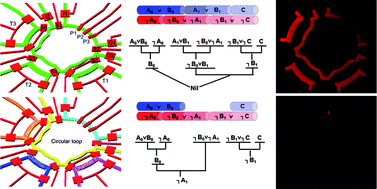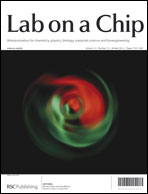Biomolecules inside a microfluidic system can be used to solve computational problems, such as theorem proving, which is an important class of logical reasoning problems. In this article, the Boolean variables (literals) were represented using single-stranded DNA molecules, and theorem proving was performed by the hybridization and ligation of these variables into a double-stranded “solution” DNA. Then, a novel sequential reaction mixing method in a microfluidic chip was designed to solve a theorem proving problem, where a reaction loop and three additional chambers were integrated and controlled by pneumatic valves. DNA hybridization, ligation, toehold-mediated DNA strand displacement, exonuclease I digestion, and fluorescence detection of the double-stranded DNA were sequentially performed using this platform. Depending on the computational result, detection of the correct answer was demonstrated based on the presence of a fluorescence signal. This result is the first demonstration that microfluidics can be used to facilitate DNA-based logical inference.

You have access to this article
 Please wait while we load your content...
Something went wrong. Try again?
Please wait while we load your content...
Something went wrong. Try again?


 Please wait while we load your content...
Please wait while we load your content...